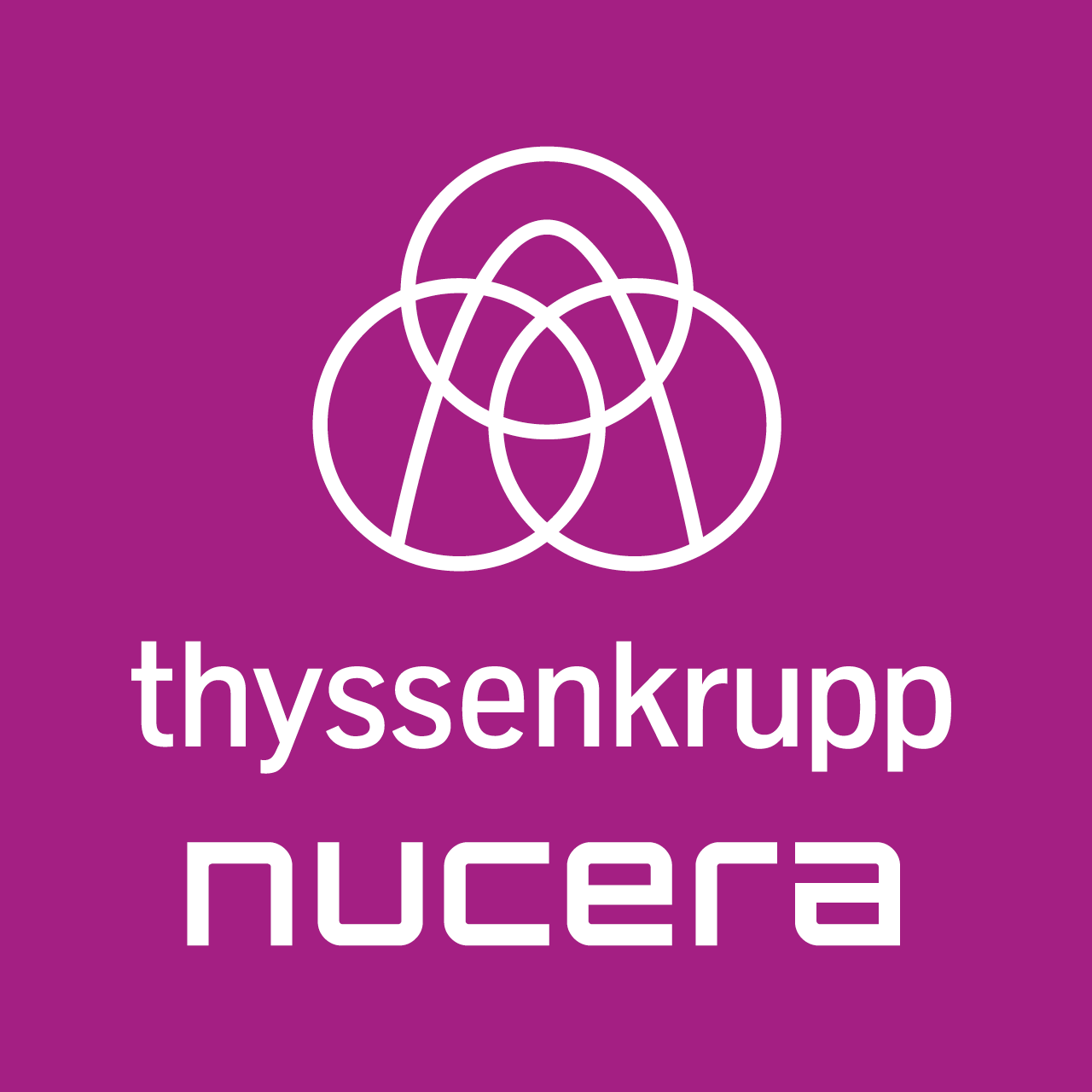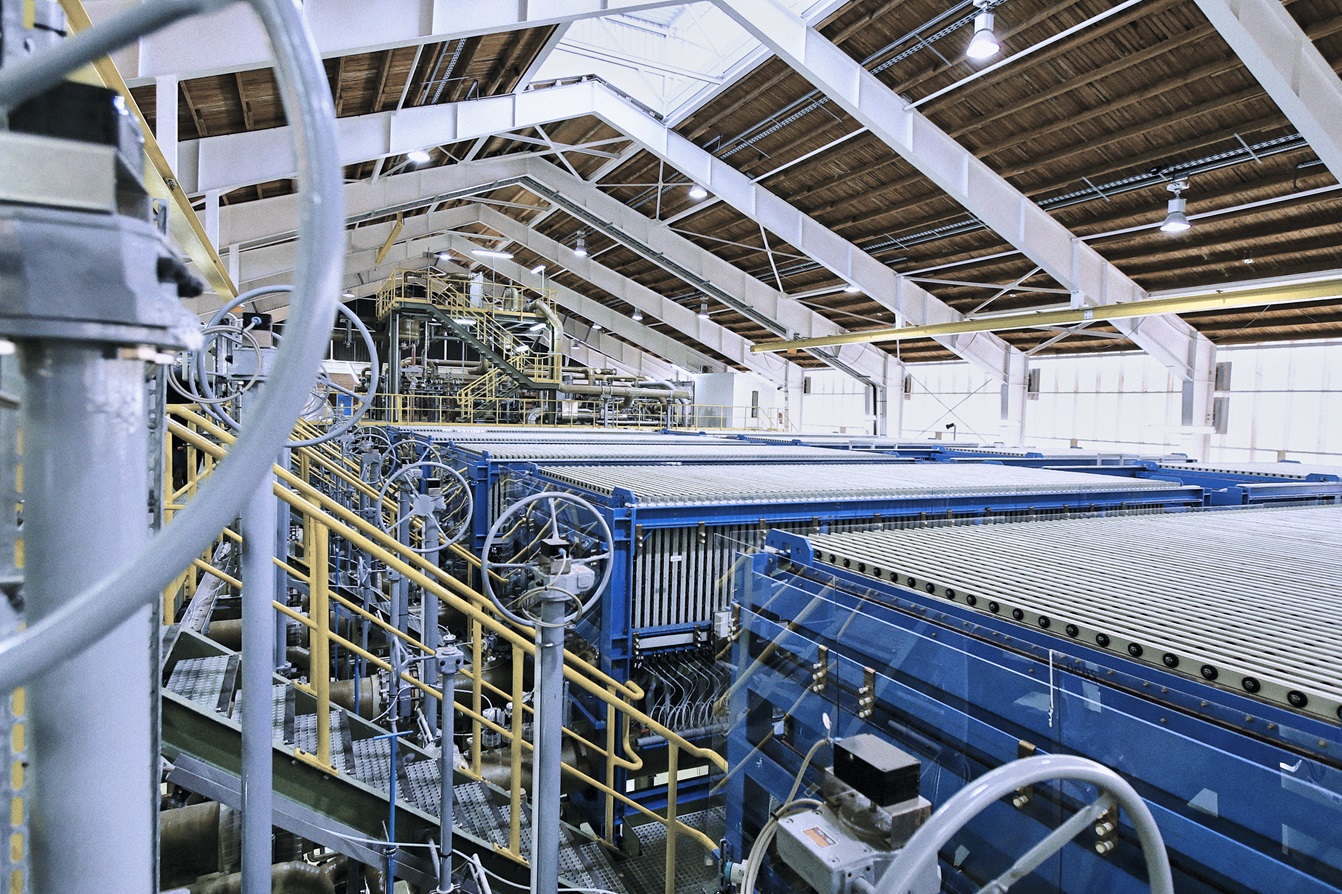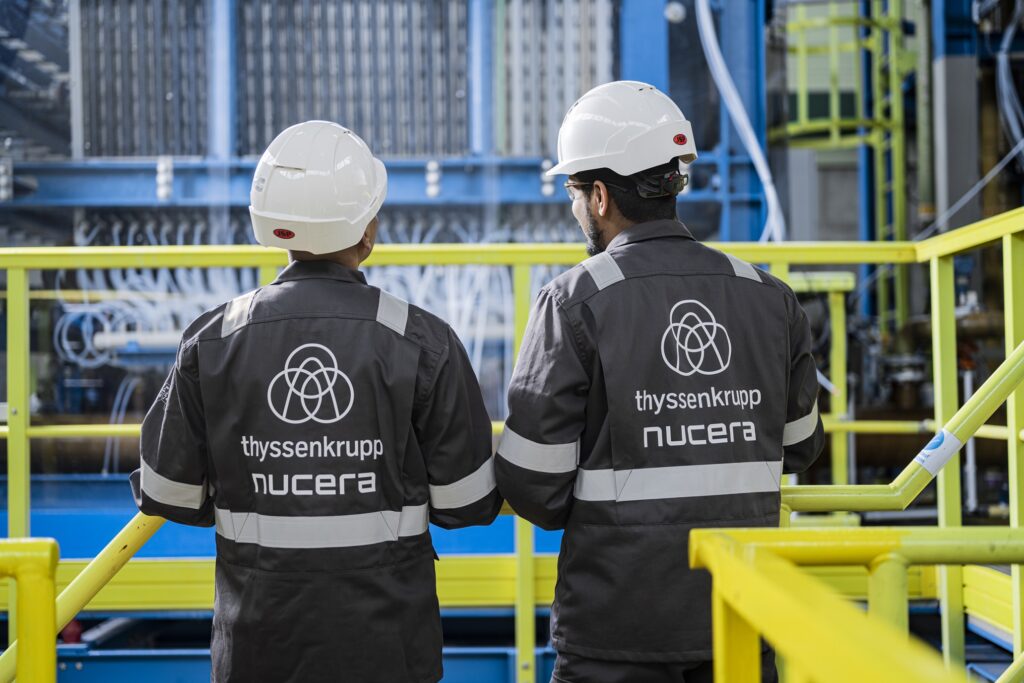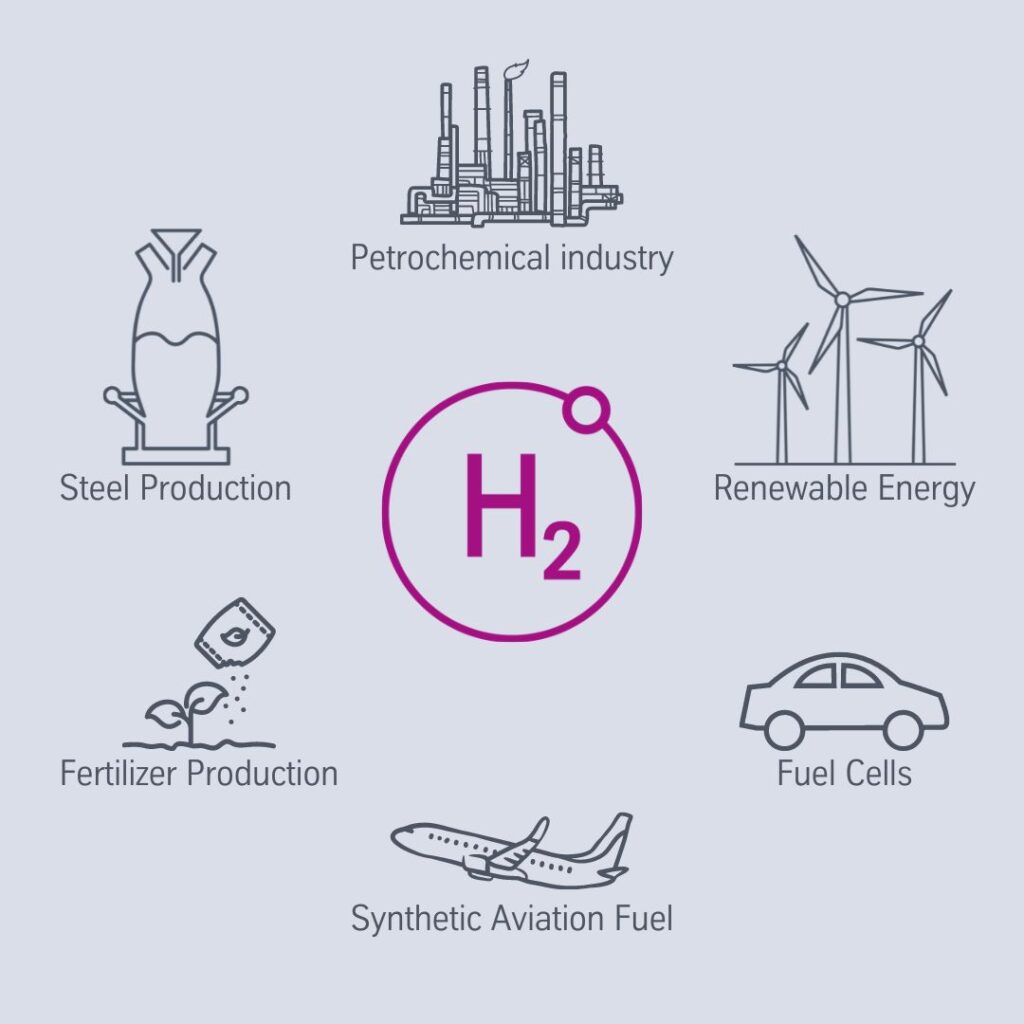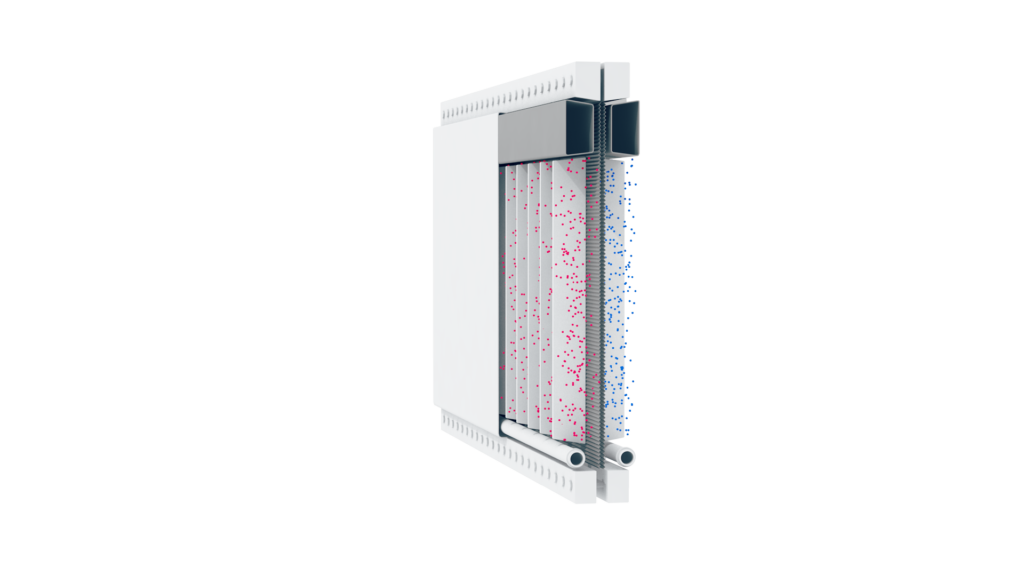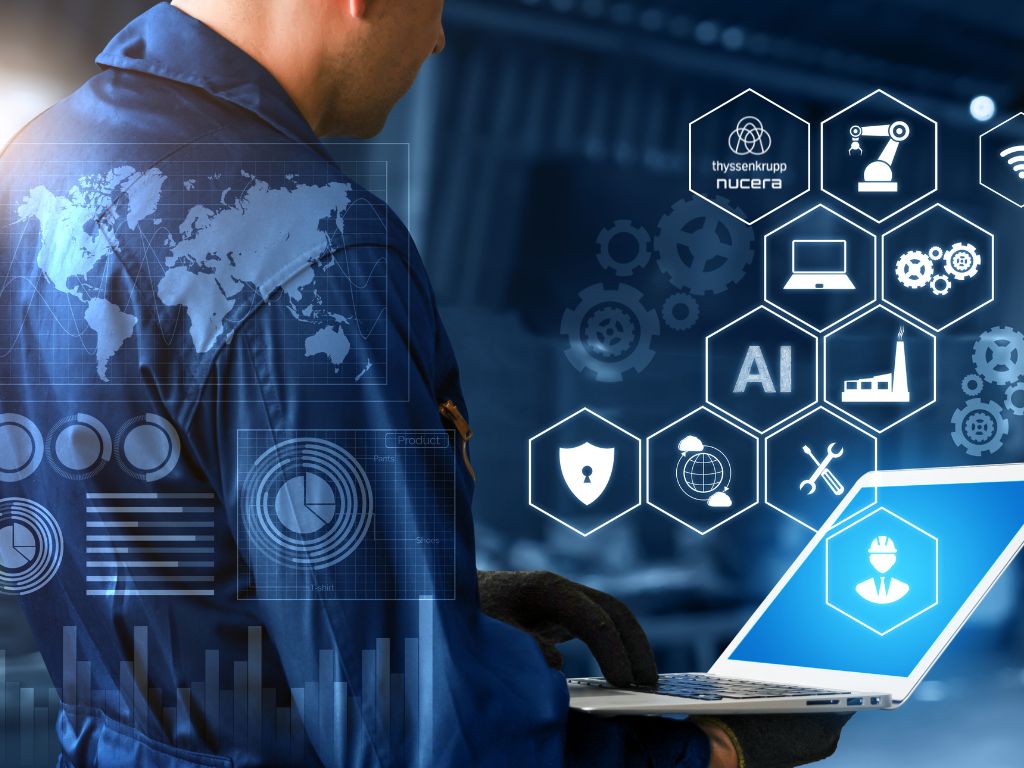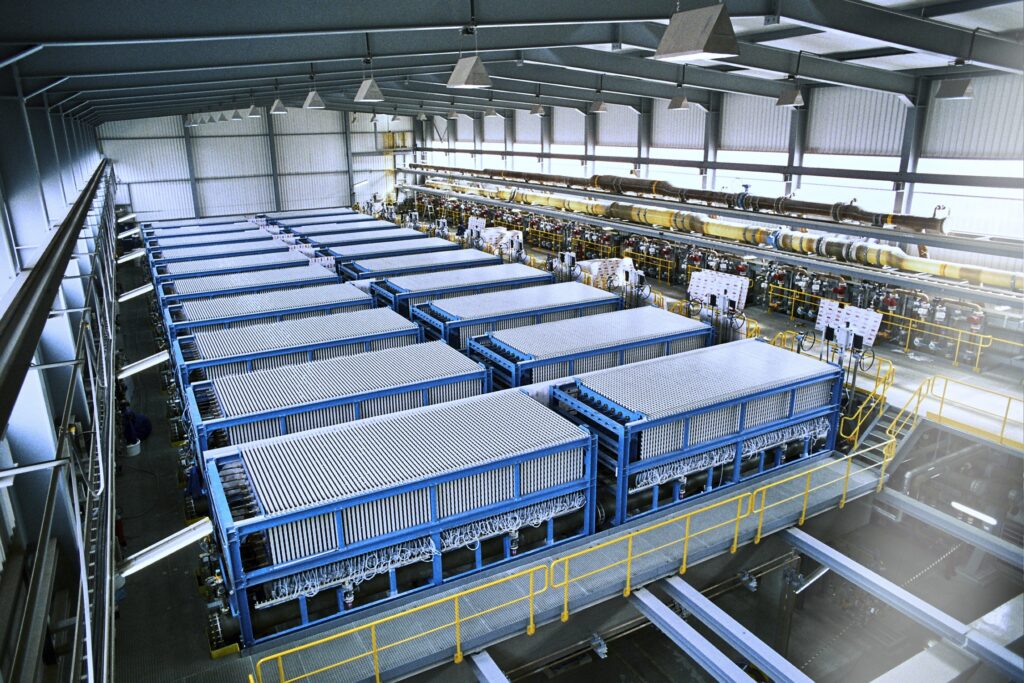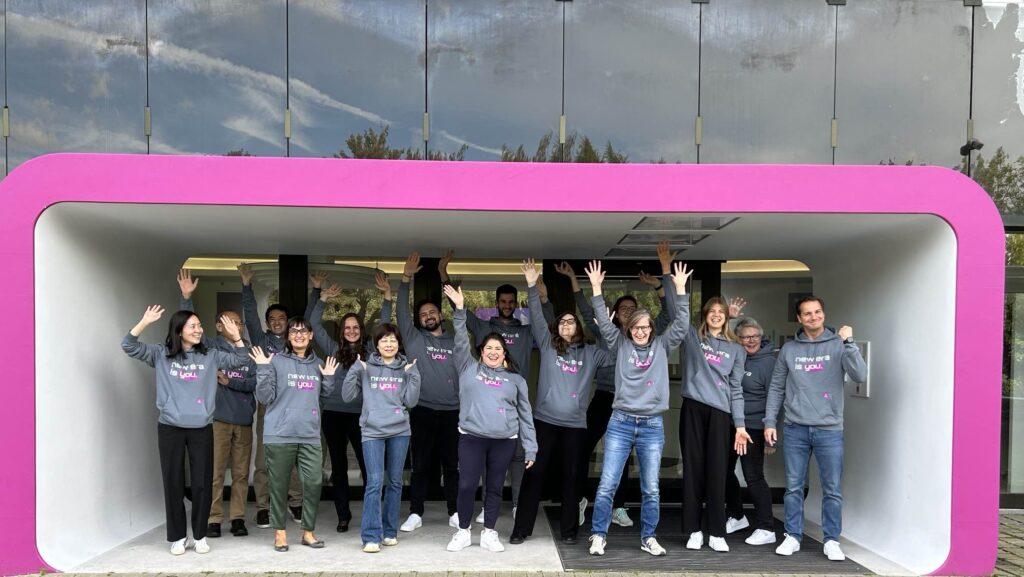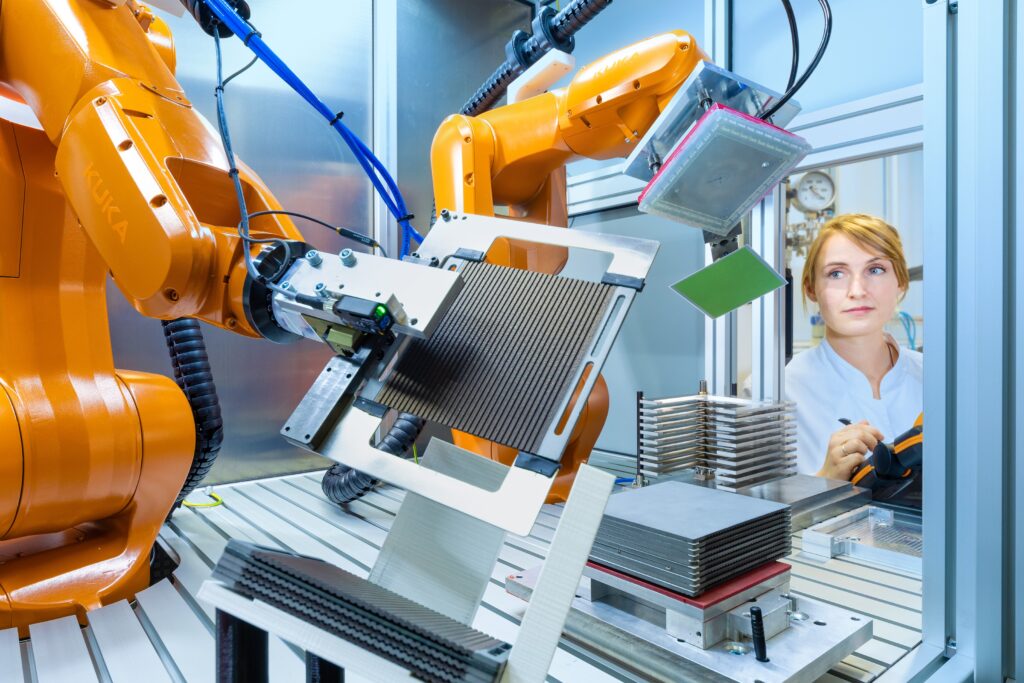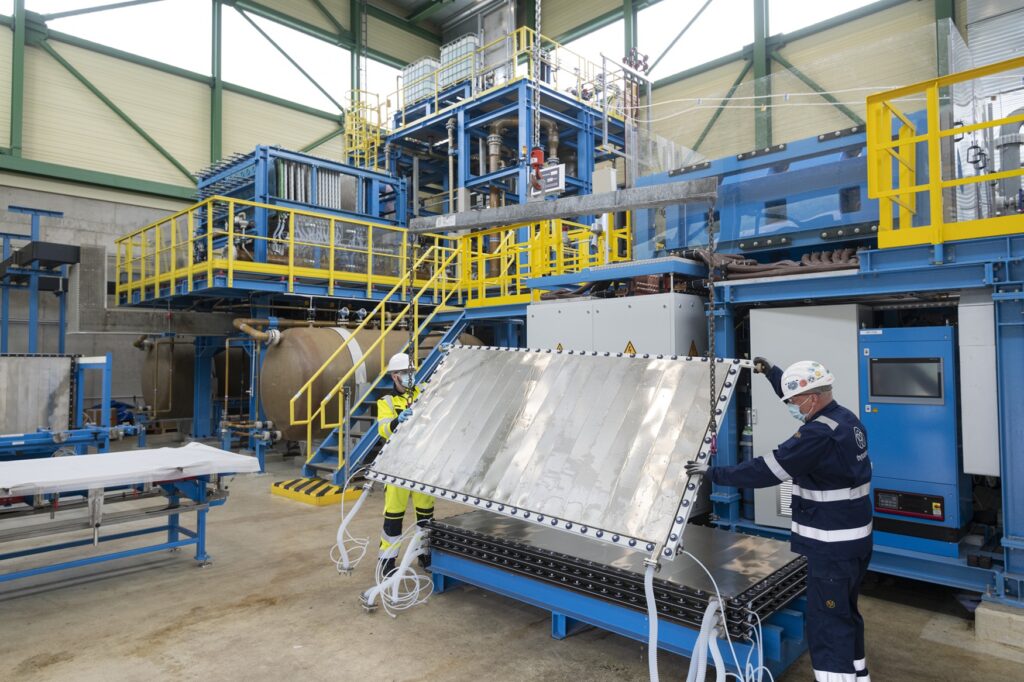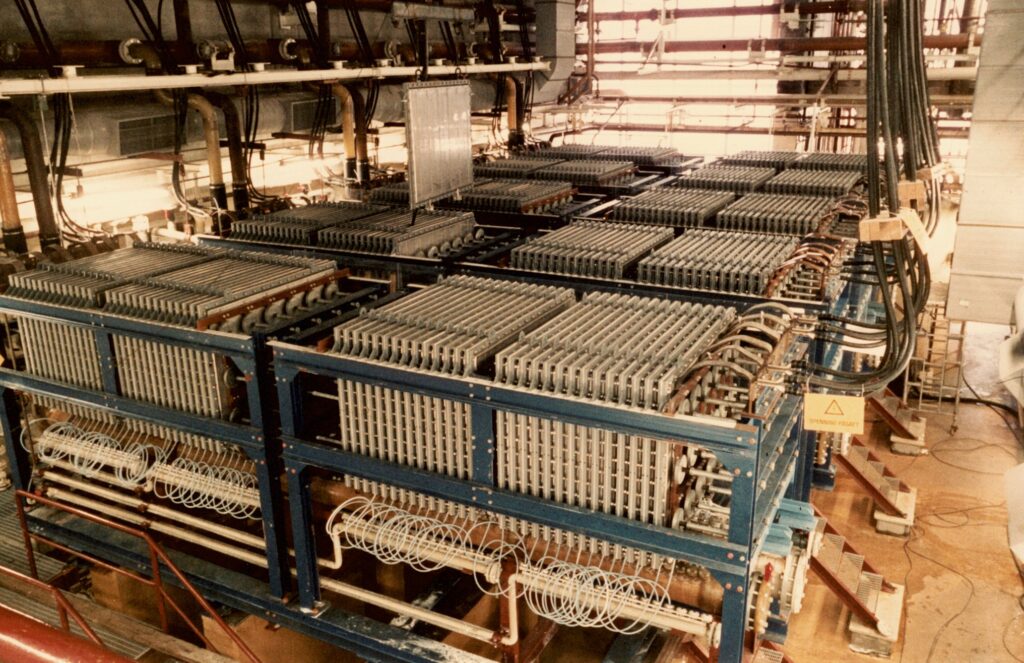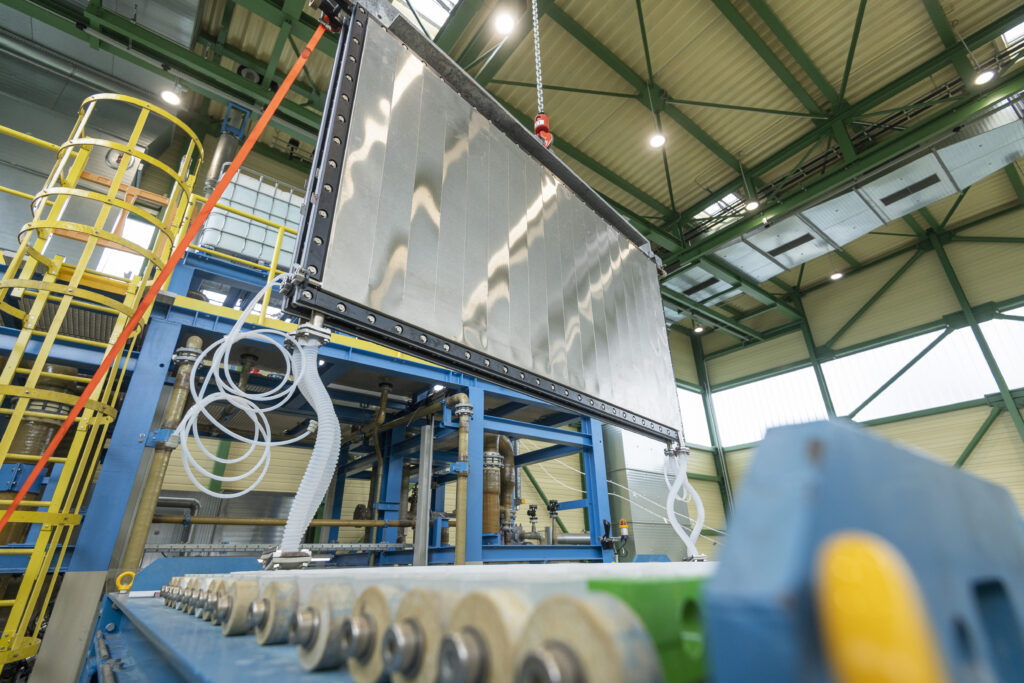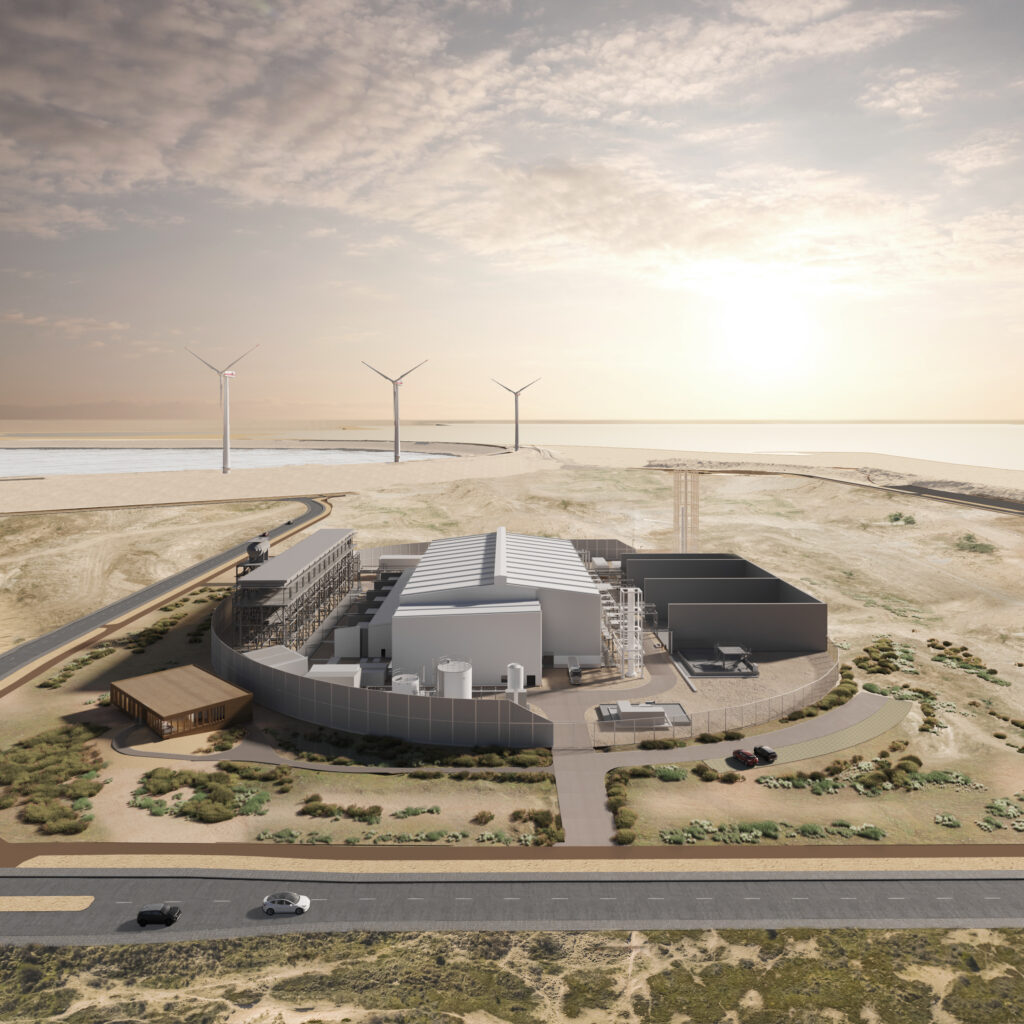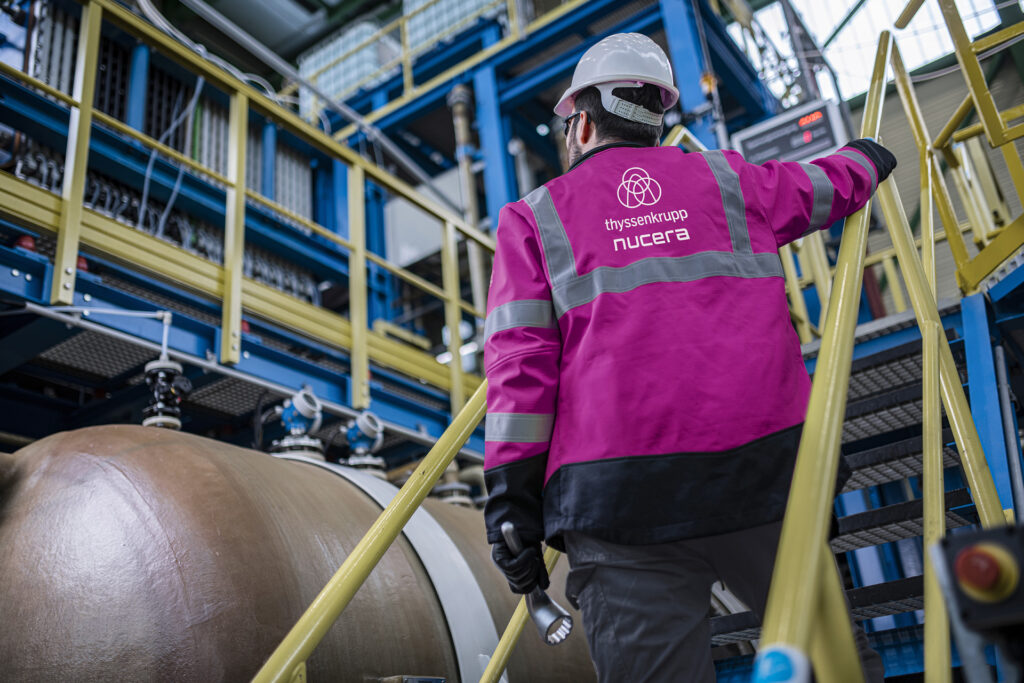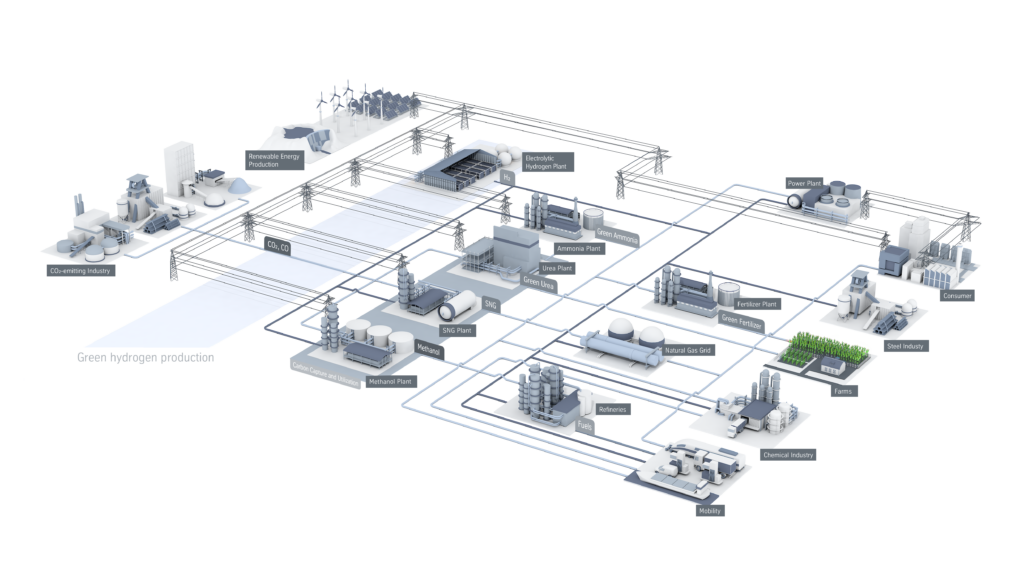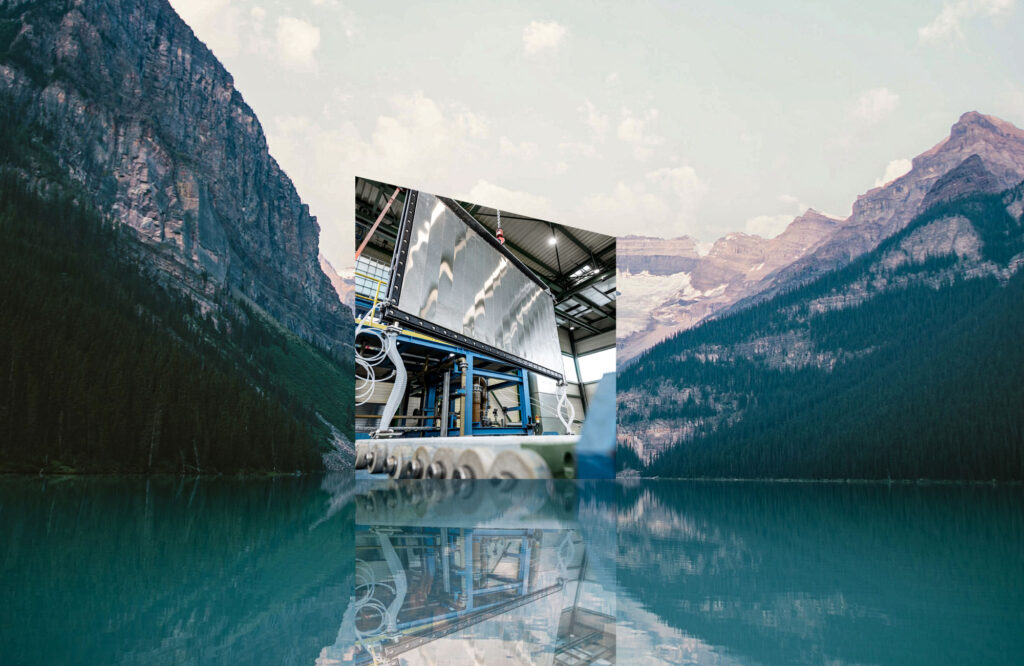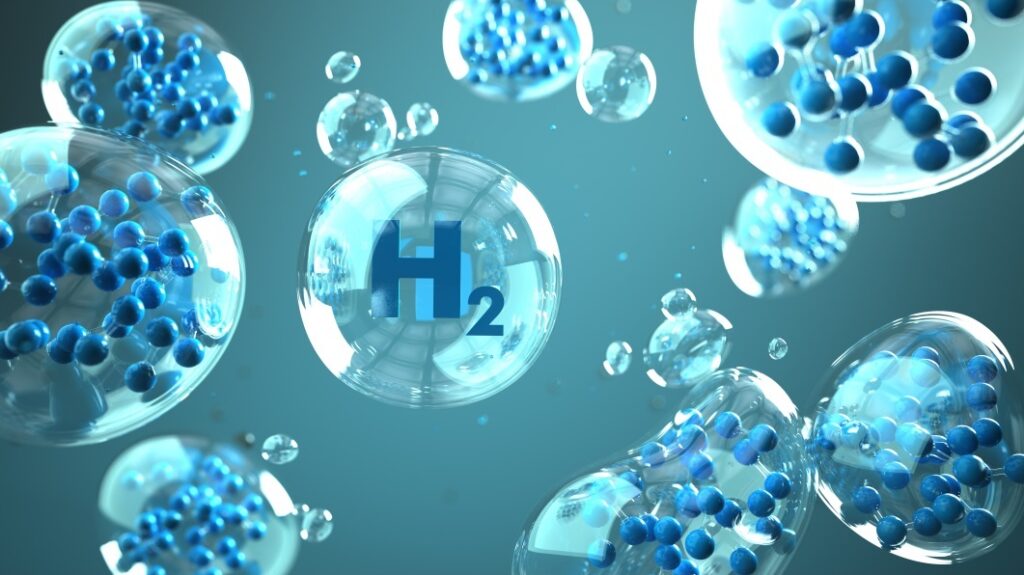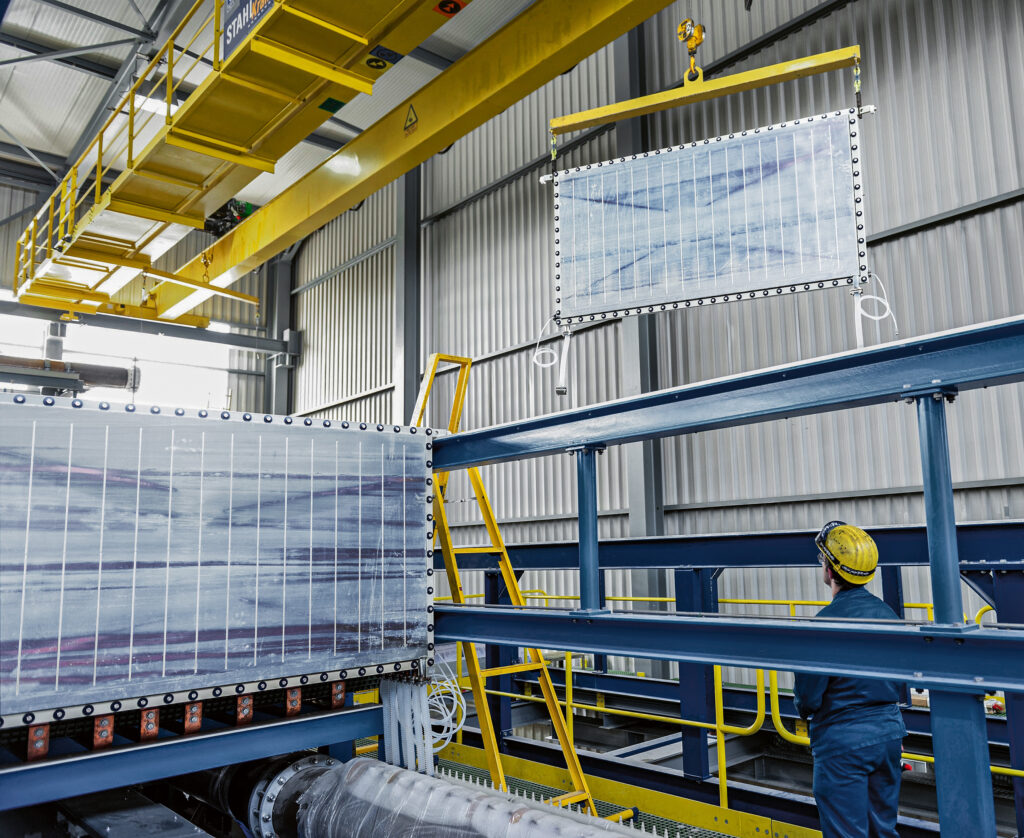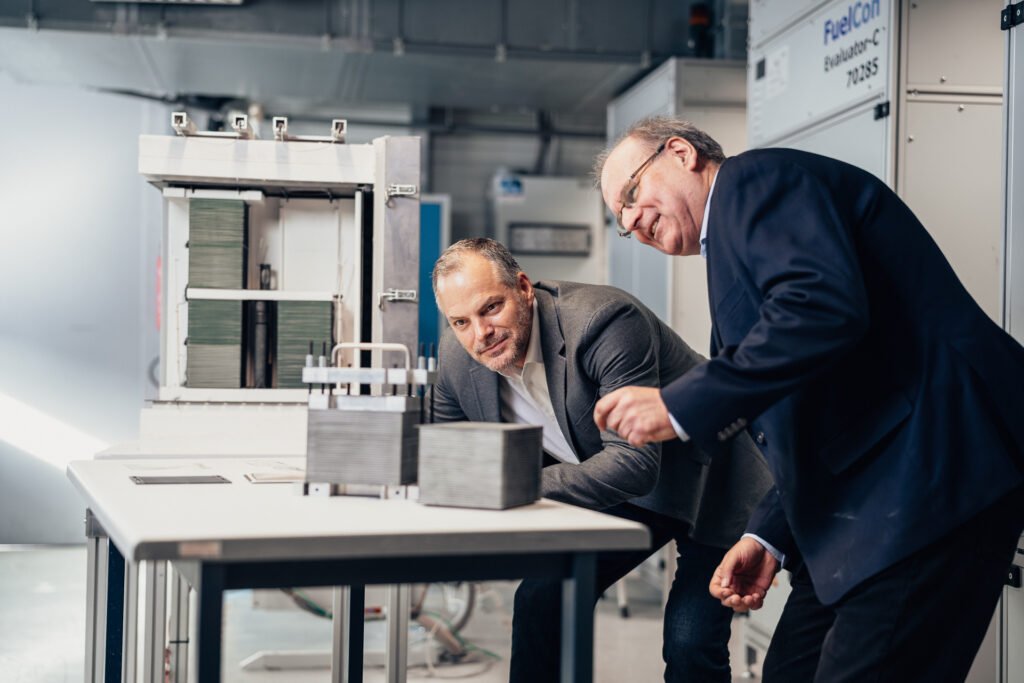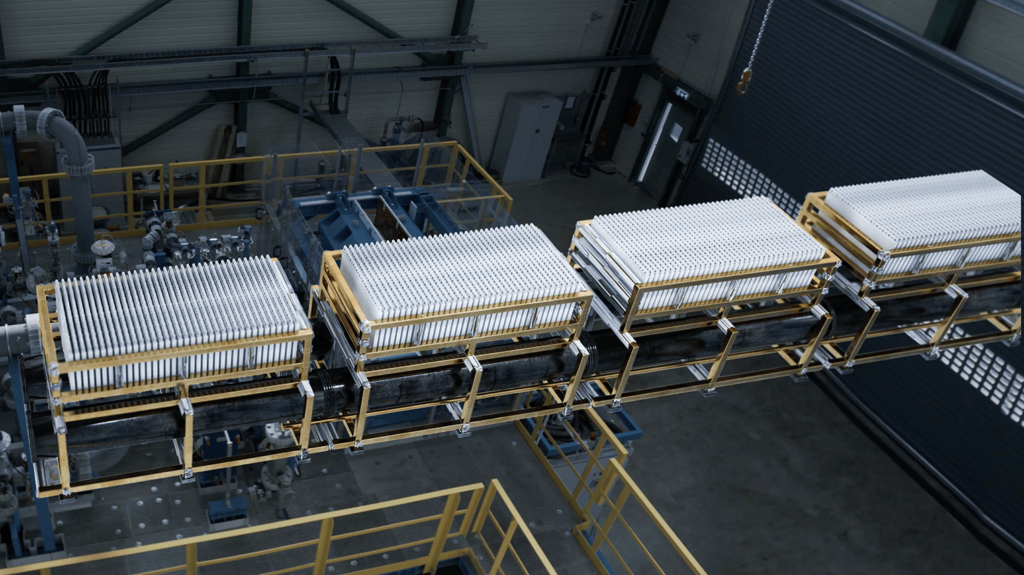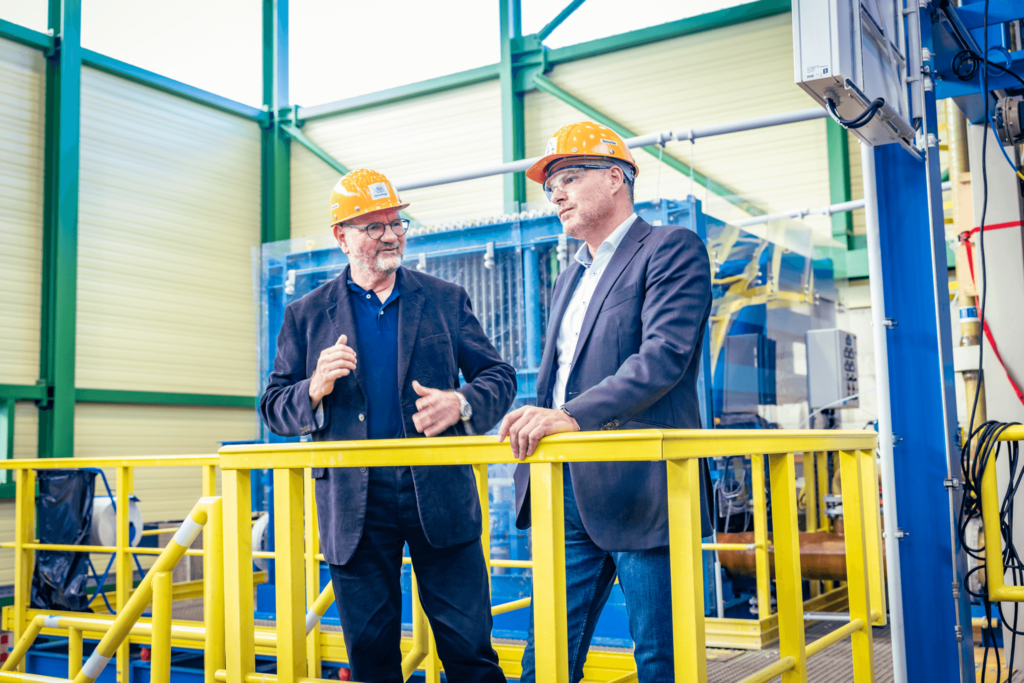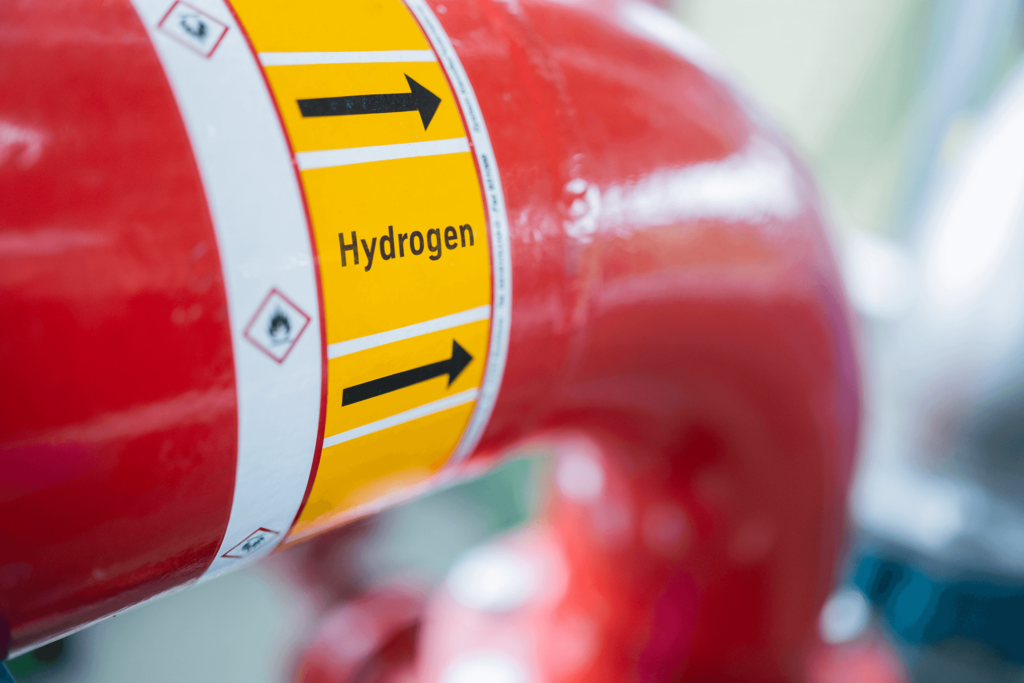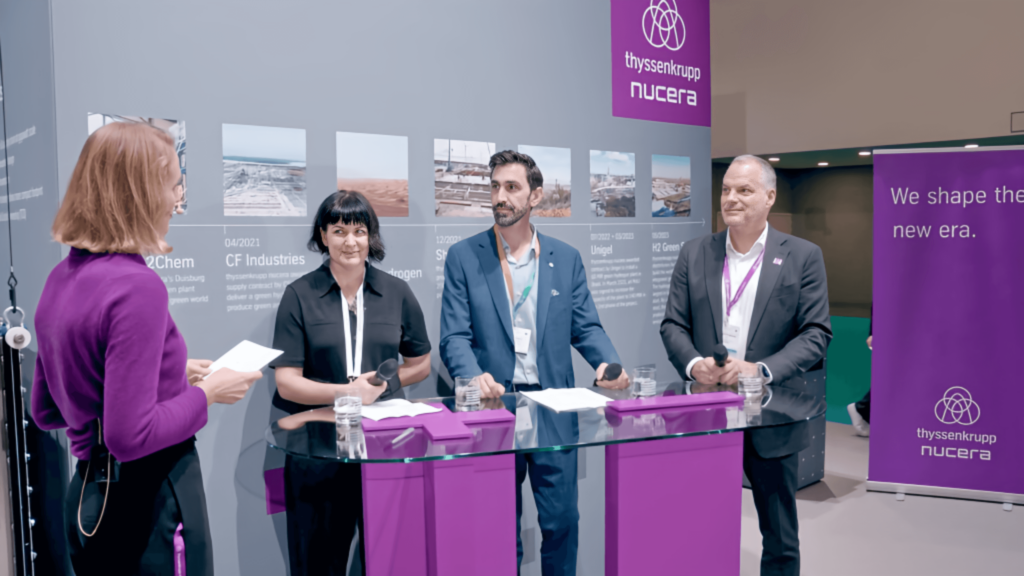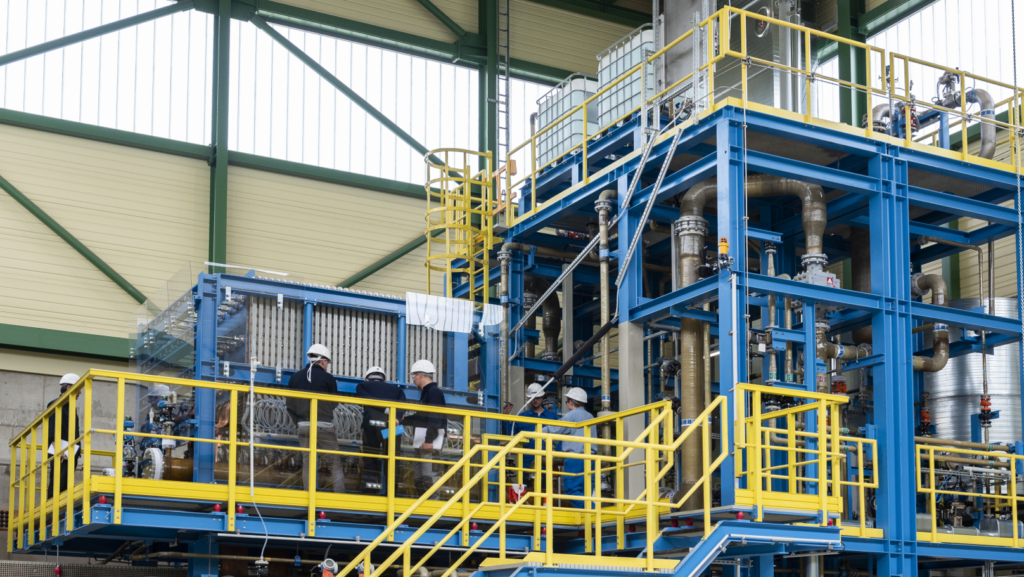thyssenkrupp nucera offers three market-leading technologies for chlor-alkali electrolysis plants, backed by a strong track record of more than 600 successful installations and 60 years of electrolysis experience. Based in Dortmund, Germany, our company boasts a global presence with centers of excellence in Okayama, Tokyo, Shanghai, Milan, Mumbai, and Houston. This expansive reach allows us to stay close to our customers and deliver swift, comprehensive technological services worldwide. From small facilities to vast plants with capacities exceeding 800,000 metric tons per year of NaOH, thyssenkrupp nucera has the right solution for you.
This article highlights our state-of-the-art chlor-alkali technologies: Bipolar Membrane (BM) Single Element technology, Bipolar Ion-Exchange Membrane Process Electrolyzer (BiTAC), and NaCl Oxygen-Depolarized Cathode Electrolysis technology (NaCl-ODC). Let’s take a closer look at each of these technologies and their benefits.
Bipolar Membrane Single Element Technology (BM)
thyssenkrupp nucera’s Bipolar Membrane Single Element technology (BM) operates on a single-cell basis, allowing easy maintenance of individual cells without disrupting the other installed cell elements. The latest iteration, BM 2.7v6 plus, features optimized design elements that surpass the 1,980 kWh per metric ton of NaOH barrier at 6 kA/m². Key highlights include an accessible active area of 2.85 m² and extended membrane life during high current density operation beyond 6 kA/m². Additional benefits include energy savings, leak-free operation and independently controlled contact pressure.
Learn more about our BM technology here.
Bipolar Ion-Exchange Membrane Process Electrolyzer (BiTAC)
thyssenkrupp nucera’s renowned filter press Bipolar Ion Exchange Membrane Process Electrolyzer, BiTAC technology operates on a filter press basis, ensuring compatibility across all generations for seamless upgrades. The latest iteration, e-BiTAC v7, advancements have achieved a new record low energy consumption of 1979 kWh/t at 6 kA/m². BiTAC requires minimal maintenance space, and the entire electrolyzer can be re-membraned quickly and efficiently.
Learn more about our BiTAC technology here.
NaCl-Oxygen-Depolarized Cathode Electrolysis Technology (NaCl-ODC)
NaCl-Oxygen-Depolarized Cathode Electrolysis Technology, NaCl-ODC is based on oxygen-depolarized cathodes (ODCs) integrated into the single-element electrolysis technology (BM2.7 design). The oxygen introduced into the cathode compartment suppresses the formation of hydrogen. This in turn enables NaCl-ODC technology to cut power consumption by up to 25% compared with conventional membrane based technology. This well-proven, reliable technology minimizes power consumption and offers ecological benefits by reducing CO₂ emissions. BM and NaCl-ODC technologies combinable in a single plant thanks to full compatibility of electrolysis cells and brine cycle
Learn more about our NaCl-ODC technology here.
Which Technology Fits Your Needs Best?
With three proven chlor-alkali technologies, choosing the right one depends on your specific needs. Each technology has its unique advantages, and at thyssenkrupp nucera, we’re committed to guiding you through the selection process based on your requirements.
Don’t hesitate to get in touch with us: houston@thyssenkrupp-nucera.com
If you have a diaphragm-based chlor-alkali plant and wish to convert to membrane technology, we are here to support you. Contact us!
